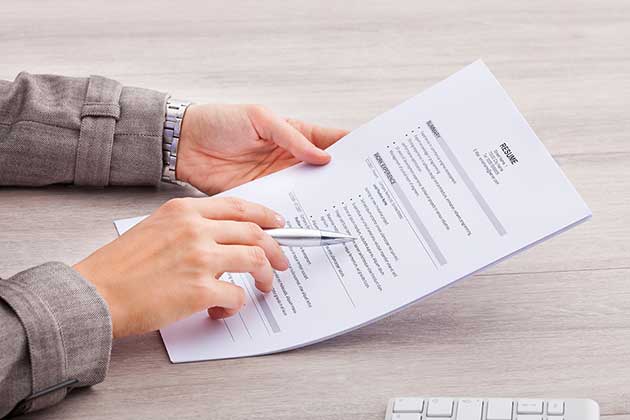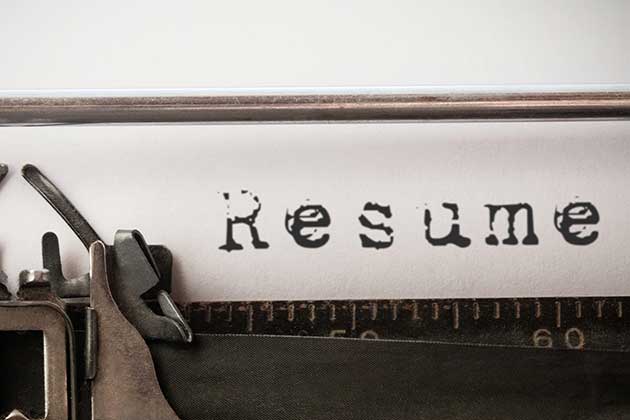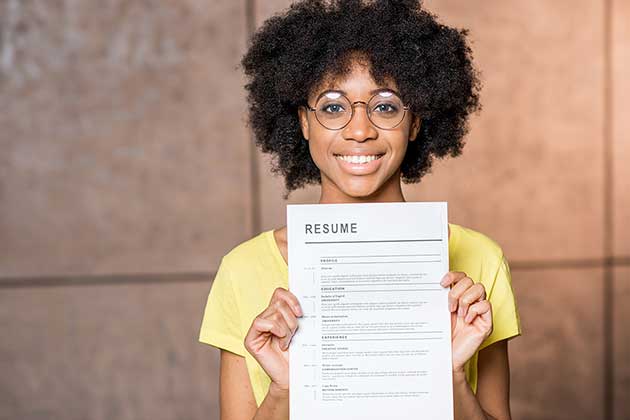Triple Check the Job Description

The truth of the matter is that most people only spend approximately 76 seconds reading a job description—and your resume can reflect that. The job description is the first and most important ingredient in building a powerful resume.
One critical mistake is sending a resume that doesn’t match the description or does not list the experience needed for the position.
Choose a Format That Works for You

There are three typical formats for a resume: reverse chronological, functional/skill based, or combined. The functional format can sometimes make the experience section irrelevant, so if you have more experience, the better choice is to go with the reverse chronological format.
This is the most common and easiest format to work with and read. This just means you start listing your experience with the most recent and relevant work and then work your way backward through your other experience.
Create A Professional Email Address

No hiring manager wants to hire boootyliscous1994@aol.com. An unprofessional email address will get a resume rejected automatically, approximately 76% of the time, according to Zety.com.
The better option is to choose a professional email provider such as Gmail or Outlook and create an email address such as john_smith2020@gmail.com or jane.doe@outlook.com.
Set Font to 10-12 Points

Here’s a thought. Hiring managers must read and process hundreds of resumes sometimes to get to the candidates they think will fit the job description best. If they have to struggle to read your resume, chances are it will get put in the reject pile in no time.
The best size to set your font is between 10-12 points so it’s easier to read and the hiring manager doesn’t have to squint to see everything.
Choose the Right Font

Just as important—or even more important, maybe—is the type of font used on a resume. It should be a professional font such as Times New Roman or Calibri.
It should not be a childlike or fun font such as Comic Sans or Curlz MT. Your resume should be professional and not child-like. If the font is hard to read, that’s an automatic resume toss into the trash.
Update Your Contact Information

This should be a no-brainer, but you would be surprised by how many resumes get sent out with incorrect contact information—or no contact information at all. Be sure not to include information such as your birthdate, marriage status, race, religion and/or gender.
In addition, if applying for a job outside of the country, you may want to omit your mailing address so the hiring manager won’t think you were confused about the location when applying for the position.
Align Content

While you should place your sections to the right, align your text to the left to make it easier for the hiring agent to skim it for relevant keywords from the job description.
Without this type of format, your resume can appear messy or unorganized. And you definitely don’t want to seem unorganized if you’re trying your best to land a position.
Be Strategic

You’ll want to be sure to strategically place bold, caps, and italics fonts in your resume. The most important aspect of this is to be consistent.
If you make one subheading bold, make the rest of them bold as well. You also want to be careful not to overdo it—the point is to make the information easier to find.
Simple Sections

Whichever layout is chosen, make sure the sections are easily identifiable. For example, list your sections in terms of Summary, Experience, Education, and Skills or terms that are similar.
Most experts advise not to use sections like About Me, Accreditations, Professional Background, and Work History.
Choosing the Layout

To build a strong resume, the layout has to be just right for you and the information you choose to include on your resume. Many resume sites suggest that after contact information, you should follow with a resume summary or an objective.
The way to decide whether to put experience or education first is to determine which is more relevant. If you have tons of work experience, list that first. If you’re a new college graduate, you want to list your education first as that will have more relevance. Make sure if you go this route to also list or describe coursework descriptions.
List Only the Most Relevant

A common mistake made while constructing a resume is including too much experience. There is no need to list each and every job you’ve had for the past 20 years. A good start is to list your most relevant position or experience and work backward from there.
Listing at least the past 10 years of experience should be sufficient, but you can list up to 15 years if it fits neatly or coincides with the job description you’re aiming for.
Keep a Good Balance

One tip we kept coming across is to make sure to balance your text and white space because it makes the resume look neat and clean. This basically just means to ensure that you’ve added margins to make the resume more aesthetically pleasing to read.
In addition, do not sacrifice white space attempting to add everything on one page.
Name Your Resume File Properly

The hiring manager WILL see your resume file name once you’ve uploaded it to their site. Using names like Jane_Doe_Resume or Jack.Peters.Resume is are a couple of good examples for naming a resume file.
Simply naming it “resume” could cause your hard work to land in a trashcan. If you give the file a proper name, you have a better chance of standing out against the competition.
Trim the Fluff

One thing you want to do is to make sure you're not writing full sentences or including too much information. We advise you to make sure each word is necessary and to keep any bullet points to six at the maximum.
Be sure to remove any unnecessary sections and go through your resume to trim all sections without diminishing your experience and skills.
Be Honest!

And the last bit of resume writing advice we will give you is: DO NOT LIE on your resume. You will be caught, whether during the interview or after you’ve been hired.
At the very least, this could result in you losing that shiny new job you’re so proud you landed and the worst-case scenario is that your entire career could be ruined—or you could incur a lawsuit. It’s best to just be honest and hope your resume gets noticed for your true merits.
 Author
Chrissy Jones
Last Updated: December 28, 2025
Author
Chrissy Jones
Last Updated: December 28, 2025